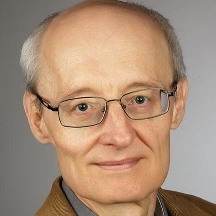Mathematical Analysis in Application to Solving Mathematical and Technical Problems
A special issue of Axioms (ISSN 2075-1680). This special issue belongs to the section "Mathematical Analysis".
Deadline for manuscript submissions: closed (30 December 2023) | Viewed by 8037
Special Issue Editors
Interests: analytical theory of differential equations; nonlinear differential equations; differential equations with fractional derivatives; mathematical modeling; computational mathematics
Special Issues, Collections and Topics in MDPI journals
Interests: dynamical systems; fractional systems; functional analysis
Special Issues, Collections and Topics in MDPI journals
Special Issue Information
Dear Colleagues,
The Special Issue is devoted to the application of mathematical analysis to solving mathematical problems areas of differential equations and optimal control, mathematical physics, mathematical problems of artificial intelligence, and interdisciplinary applications of mathematical theory in the study of building structures and energy in calculations. In particular, we propose the development of a method for substantiating mathematical models based on differential equations, with both ordinary and fractional derivatives in various fields of human activity, and the development of the mathematical apparatus of artificial intelligence elements to expand the capabilities of classical numerical methods. These are interesting for use in the following circumstances: when obtaining conditions for the solvability of differential equations in the analytical theory of differential equations; when proving existence and uniqueness theorems for solutions of non-linear differential equations with moving singular points, both in the domain of analyticity and in a neighborhood of moving singular points, as well as when constructing analytical approximate solutions of such equations; and when proving existence and uniqueness theorems for solutions to equations with fractional derivatives and proving convergence in numerical calculations.
The Special Issue is, naturally, open to new ideas beyond the topics listed above. We hope that this initiative will be attractive to experts in the theory of differential equations with both ordinary and fractional derivatives, as well as their theoretical and practical applications in various fields of human activity.
Researchers from interdisciplinary fields are invited to submit original research results and review articles to this issue.
Contributions may be made on a rolling basis until the deadline. Upon completion of the peer review process, submissions will be selected for publication based on their quality and relevance.
Dr. Victor Orlov
Prof. Dr. Michal Feckan
Guest Editors
Manuscript Submission Information
Manuscripts should be submitted online at www.mdpi.com by registering and logging in to this website. Once you are registered, click here to go to the submission form. Manuscripts can be submitted until the deadline. All submissions that pass pre-check are peer-reviewed. Accepted papers will be published continuously in the journal (as soon as accepted) and will be listed together on the special issue website. Research articles, review articles as well as short communications are invited. For planned papers, a title and short abstract (about 100 words) can be sent to the Editorial Office for announcement on this website.
Submitted manuscripts should not have been published previously, nor be under consideration for publication elsewhere (except conference proceedings papers). All manuscripts are thoroughly refereed through a single-blind peer-review process. A guide for authors and other relevant information for submission of manuscripts is available on the Instructions for Authors page. Axioms is an international peer-reviewed open access monthly journal published by MDPI.
Please visit the Instructions for Authors page before submitting a manuscript. The Article Processing Charge (APC) for publication in this open access journal is 2400 CHF (Swiss Francs). Submitted papers should be well formatted and use good English. Authors may use MDPI's English editing service prior to publication or during author revisions.
Keywords
- a theorem on the existence and uniqueness of a solution to a nonlinear differential equation in the domain of analyticity
- a theorem on the existence and uniqueness of a solution to a nonlinear differential equation in the vicinity of a moving singular point
- existence theorem for a solution to a differential equation with fractional derivatives
- analytical approximate solution of a nonlinear differential equation in the domain of analyticity, a priori and a posteriori error estimates
- analytical approximate solution of a nonlinear differential equation in the vicinity of a moving singular point, a priori and a posteriori error estimates
- approximate analytical and numerical methods for solving a differential equation with fractional derivatives
- verification of the fractional derivative index for the mathematical model of the process under study
- mathematical substantiation of the equation with a fractional derivative as a model of the process under study
- mathematical models of building structures
- stability analysis of fractional differential equations
- mathematical model of electrical networks





